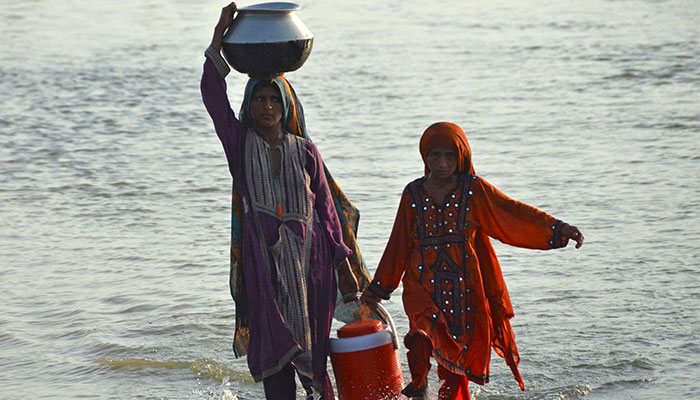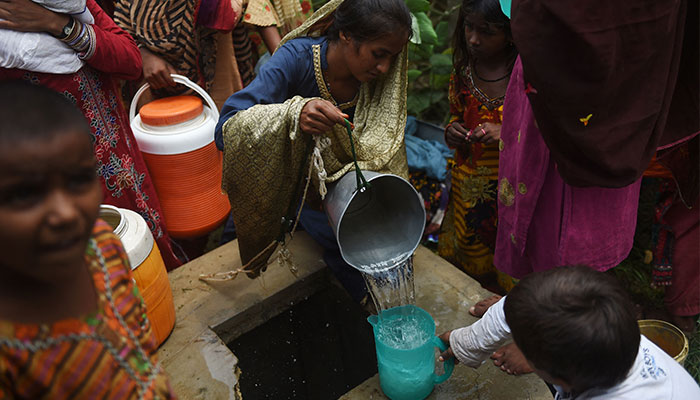Flood situation highly likely to boost disease spread as Pakistan battles health threats: WHO
Latest WHO situation report on flooding in Pakistan highlights over 6.4m people in dire need of humanitarian aid
September 01, 2022

- WHO highlights severe impact of flooding in Pakistan on health sector.
- Report states 888 health facilities damaged so far.
- Spread of disease "highly likely" to increase, says WHO report.
The current flood situation will highly likely increase the spread of disease, especially if and when response capacities are hindered, says the World Health Organization (WHO), as Pakistan continues its relentless battle against deadly floods.
In its latest situation report on flooding in Pakistan, the WHO pointed out that the heavy monsoon rains in Pakistan which started in mid-July 2022 are continuing in many parts of the country and have affected 116 districts (75%) out of 154 districts of the country. The most affected province is Sindh, followed by Balochistan.
As of August 25, 2022, more than 33 million people have been affected and over 6.4 million people are in dire need of humanitarian aid, including 421,000 refugees, the WHO report highlighted. More than 1,100 lives have been lost and almost 15,000 people injured.
The WHO report focused on what it called the "severe" impact on health facilities, stating that as of August 28, 2022, 888 health facilities have been damaged in the country of which 180 of them are completely damaged. "Access to health facilities, health care workers, and essential medicines and medical supplies remain the main health challenges for now," the report read.

Pakistan's health system is already battling multiple concurrent health threats, including COVID 19, and outbreaks of cholera, typhoid, measles, leishmaniasis and HIV, the WHO said, adding that even before the current floods, there was a significant disparity in access to health services between rural and urban areas.
5 million feared sick over next 12 weeks in flooded areas
Health experts have sounded the alarm regarding the outbreak of disease in flood-affected areas, estimating around five million people to fall sick in the next four to 12 weeks.
It is estimated that a disease outbreak would initially require medicines and medical supplies worth Rs1 billion, they said, and urged donors, philanthropists and common people to donate these after consulting health experts and officials of rescue and welfare organisations.
Torrential rains and flooding have submerged a third of Pakistan and killed more than 1,100 people, including 380 children as the United Nations appealed for aid on Tuesday for what it described as an "unprecedented climate catastrophe."
The country has received nearly 190% more rain than the 30-year average in the quarter through August this year, totalling 390.7 millimetres (15.38 inches). Sindh province, with a population of 50 million, was hardest hit, getting 466% more rain than the 30-year average.
"One third of the country is literally under water," Climate Change Minister Sherry Rehman told Reuters, describing the scale of the disaster as "a catastrophe of unknown precedent".
At least 380 children were among the dead, Prime Minister Shehbaz Sharif told reporters during a briefing at his office in Islamabad.











